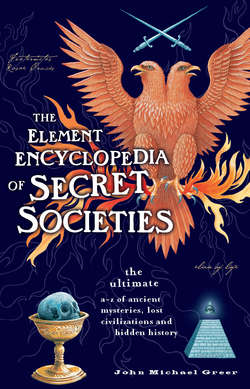Читать книгу The Element Encyclopedia of Secret Societies: The Ultimate A–Z of Ancient Mysteries, Lost Civilizations and Forgotten Wisdom - John Greer Michael - Страница 95
CAGLIOSTRO, ALESSANDRO
ОглавлениеSicilian adventurer, 1743–95. Born Giuseppe Balsamo into a working-class family in Palermo, he spent a short time in his youth as a novice of the Brothers of Mercy, a Catholic monastic order, but was expelled after a series of scandals and launched a new career as a confidence artist and forger who claimed to have magical powers. After convincing several landowners that spirits would show him buried treasure on their property for a price, he was caught forging the title deed to an estate and fled Palermo.
He next turned up in Rome, where he met and married the beautiful blonde Lorenza Feliciani, a belt-maker’s daughter in her teens with a taste for high living and no moral scruples worth mentioning. The two of them quickly found a niche preying on the highest circles of European society. Balsamo at first called himself the Marquis Pellegrini, then settled on the more dashing Count Alessandro Cagliostro, while Lorenza became the Countess Seraphina Cagliostro. He sold patent medicines and elixirs of life for inflated prices, while she marketed her charms to rich noblemen and dabbled in blackmail as well. The proceeds proved rewarding enough to ensure that Cagliostro was soon in the forefront of society, moving from city to city just often enough to keep the threat of exposure at bay.
In 1777 he was in London, and there applied for membership to a Masonic lodge affiliated with the Rite of Strict Observance, then the most popular Masonic rite in Germany. He was initiated in the first four degrees of the Rite’s system, and a short time thereafter announced that he had found an old Masonic manuscript at a London bookstall, containing rituals for a system of Egyptian Masonry as old as the pyramids, full of occult and alchemical secrets. His new Egyptian Rite was launched in 1778, with Cagliostro as Grand Copht, and immediately attracted a wide following. Since the initiation fees and dues paid by members of the Rite ended up in Cagliostro’s pocket, this proved much more lucrative than his previous trade in elixirs and launched the most successful phase of his career. See Rite of Strict Observance.
He traveled around Europe with Lorenza for most of the following decade, establishing lodges of the Egyptian Rite and spending money lavishly. In 1780 he came to Strasbourg and became an intimate of Louis, Cardinal Rohan, one of the most influential men in France. After traveling elsewhere in France, establishing the Grand Lodge of his Egyptian Rite in Lyons, Cagliostro made a triumphant entry into Paris in 1785, cutting a dashing figure in Parisian society. In August of that year, however, he was arrested along with Rohan as the “affair of the diamond necklace” came to light. This was a complicated fraud in which Rohan was duped into spending 1,600,000 livres on a diamond necklace, supposedly for the French queen Marie Antoinette, whose political and sexual favors Rohan hoped to enjoy. While Cagliostro’s complicity in the hoax has never been proved, he repeatedly advised Rohan to do what the plotters wanted.
For his part in the affair, Cagliostro spent most of a year in the Bastille; in June 1786 he was released and banished from France. Through the whole affair, the French popular press mocked him unmercifully as a fraudulent alchemist and poseur. The final blow fell late in 1786, when a newspaper article by a hack journalist in London, Charles Théveneau de Morande, traced him back to his origins and revealed, behind the dashing image of Count Cagliostro, the far less impressive figure of Giuseppe Balsamo, the confidence artist from Palermo. Abandoned by his patrons, Cagliostro fled from London to Switzerland, and Lorenza, who wanted to see her family again, convinced him to go on to Rome. There, in 1789, he was arrested by the Inquisition. The Roman Catholic Church at that time considered Freemasonry to be a religious heresy; Cagliostro was condemned to death, but the pope commuted his sentence to life imprisonment. He lingered in the dungeons of the papal fortress of San Leo until 1795, when he died of a stroke.
Cagliostro’s dazzling career and his dismal fate in the pope’s dungeons predisposed many people in the Protestant countries of Europe to remember him as the mysterious Masonic adept he pretended to be. There are still occultists and occult traditions that insist that Cagliostro the Grand Copht and Giuseppe Balsamo the petty crook were two different people. The Fratres Lucis, a small British occult order of the late nineteenth century, claimed to have received its teachings from the spirit of Cagliostro via crystal ball.
Further reading: Butler 1948, Trowbridge 1910.
